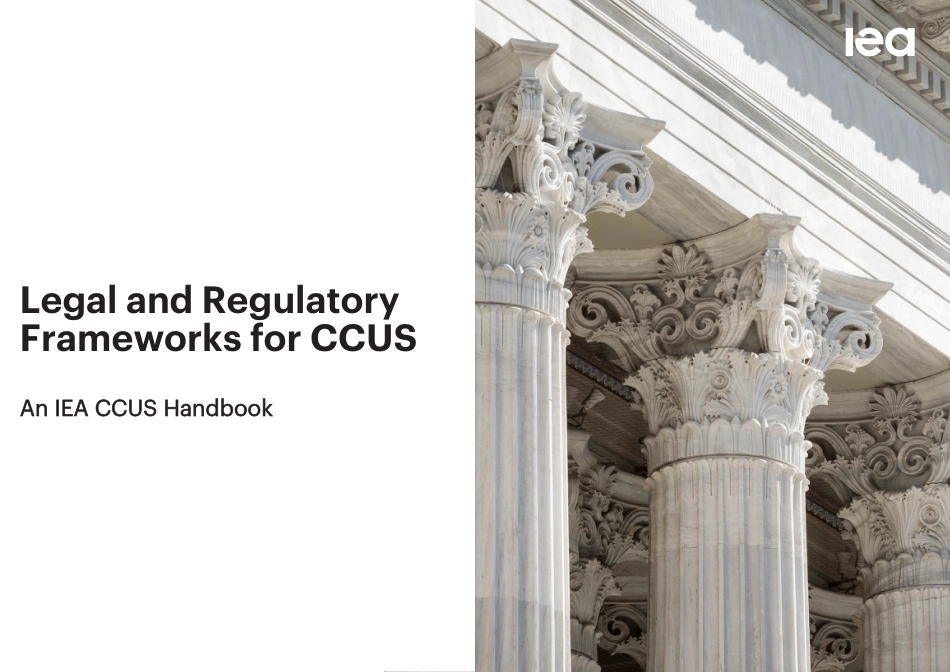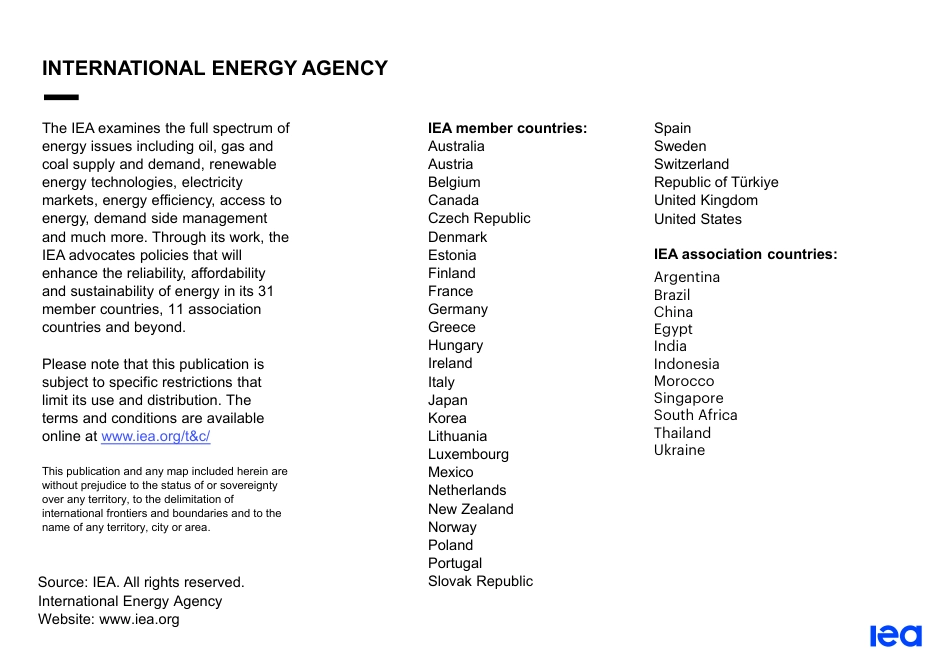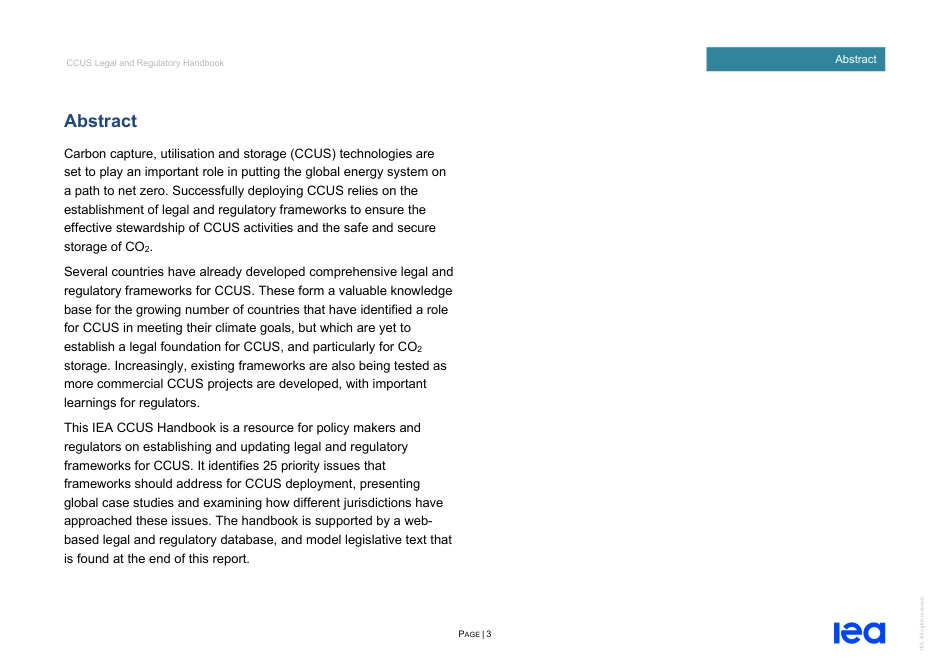Legal and Regulatory Frameworks for CCUSAn IEA CCUS HandbookThe IEA examines the full spectrum of energy issues including oil, gas and coal supply and demand, renewable energy technologies, electricity markets, energy efficiency, access to energy, demand side management and much more. Through its work, the IEA advocates policies that will enhance the reliability, affordability and sustainability of energy in its 31 member countries, 11 association countries and beyond. Please note that this publication is subject to specific restrictions that limit its use and distribution. The terms and conditions are available online at www.iea.org/t&c/ This publication and any map included herein are without prejudice to the status of or sovereignty over any territory, to the delimitation of international frontiers and boundaries and to the name of any territory, city or area.Source: IEA. All rights reserved. International Energy Agency Website: www.iea.org IEA member countries: Australia Austria Belgium Canada Czech Republic Denmark Estonia Finland France Germany Greece Hungary Ireland Italy Japan Korea LithuaniaLuxembourg Mexico Netherlands New Zealand Norway Poland Portugal Slovak Republic INTERNATIONAL ENERGY AGENCY Spain Sweden Switzerland Republic of TürkiyeUnited Kingdom United States IEA association countries: ArgentinaBrazilChinaEgyptIndiaIndonesiaMoroccoSingaporeSouth AfricaThailandUkraine CCUS Legal and Regulatory Handbook PAGE | 3 Abstract IEA. All rights reserved. AbstractCarbon capture, utilisation and storage (CCUS) technologies are set to play an important role in putting the global energy system on a path to net zero. Successfully deploying CCUS relies on the establishment of legal and regulatory frameworks to ensure the ef...



